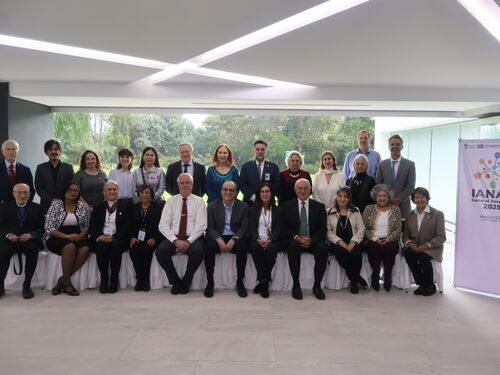Fighting Vaccine Hesitancy: What Can We Learn From Social Science?
Feature Story
By Megan Lowry and Dara Shefska
Last update July, 1 2021

As COVID-19 vaccination programs across the country transition from meeting urgent demand to reaching people who are less eager to get the shot, leaders are looking for new vaccine communications strategies. The National Academies of Sciences, Engineering, and Medicine recently published two rapid expert consultations that offer advice to public officials about overcoming vaccine hesitancy and communicating about vaccine efficacy.
Baruch Fischhoff, Howard Heinz University Professor at Carnegie Mellon University, and Emily K. Brunson, associate professor at Texas State University, recently spoke at a webinar on the two consultations and received over 1,000 questions from attendees. In this Q&A, they take on some of those questions and go deeper into what we know about vaccine hesitancy, offering insights from their own research and experience.
Q: Where is hesitancy about getting vaccinated against COVID-19 coming from?
Brunson: Hesitancy comes from many sources. Common concerns include how quickly the COVID vaccines were developed and if they are safe. Many people have adopted a “wait and see” attitude in response to these concerns. Others have technical questions including if they should be vaccinated if they’ve already had COVID, if the vaccines will be effective against different strains, and how we will know if they’re safe for children.
Of course, in some cases, these questions are accompanied by a mistrust of medicine, public health, and government more generally. In communities of color, we can trace this mistrust back to a history of neglect and exploitation at the hands of health care providers and government, as well as people’s recent and personal experiences with structural inequities in public health, medicine, and social services.
Because different types of hesitancy exist, it is important that any vaccine communication initiative is based on the concerns of particular communities and that they are sensitive to the underlying reasons for these concerns.
Q: Can you give us some examples of clear and effective message you’ve seen encouraging hesitant people to get vaccinated?
Brunson: Early on, messages from celebrities, politicians, religious leaders, and other public figures made a difference. More recently, as those who were more easily persuaded have already accepted vaccination, more personal approaches have been effective. One example of this is conversations between barbers/hairstylists and their clients in Maryland, which have created a community venue for people to exchange questions and COVID-19 vaccine facts.
As the vaccination effort continues, it will be important to continue to adapt messages (and their messengers) to people who still remain hesitant. Community health workers, community advocates, and local community organizations are in the best positions to know what information needs to be shared and who can share it. A recent success story is the community partnerships taking root in San Francisco — where work with organizations like the Latino Task Force have resulted in vaccination rates that exceed 80%.
As we develop messages, it’s important to always be clear, be credible, and be respectful.

Q: What about what not to do — what messages have you heard in the past six months that have made you cringe or think “they should be doing this differently”?
Fischhoff: My greatest concern is not with the content of the communications, but with the process that produced them. Were members of diverse communities consulted before message design began, to ensure its relevance and secure their trust? Did messages undergo at least minimal testing? Did the messages respect the constraints on recipients’ lives — finances, work schedules, transportation, child and elder care responsibilities, etc. — and not ask them to do the impossible?
Q: How can messengers handle questions about breakthrough cases of COVID-19, which might make people doubt if it’s worth it for them to get vaccinated? Or questions about adverse events?
Fischhoff: In the study of communication, we see risk communication (giving people the facts and uncertainties) and health communication (encouraging protective behaviors, like wearing a mask or getting vaccinated) as mutually supportive activities. If these are both done right, authoritative facts will be out there to dispel bad information — and breakthrough cases won’t be a surprise, but seen by the public as mild cases of the virus that otherwise would have been worse without the vaccine.
When there are problems, people should hear about them first from public health officials, so that nothing seems hidden. And the rationale for the actions that follow should be explained.
Q: What about those in our communities who feel they can’t deal with the side effects of the vaccine, perhaps because they’re already sick, or they’re working and can’t take time off to rest. How can we address that concern?
Brunson: Let’s first be clear that this concern is about access, not vaccine hesitancy. In these instances, it is best to acknowledge people’s barriers to vaccination, and then address the access issues head on. For people who can’t be vaccinated due to work constraints, including not being able to take time off to get vaccines or if they become ill, it may require working with employers to make vaccines available at workplaces and negotiate for these same employers to work with employees who may have reactions to the vaccines. It’s a harder ask, but a necessary one to deal with access issues.



